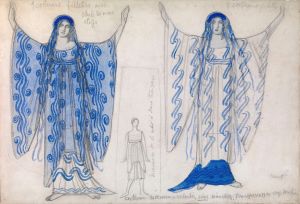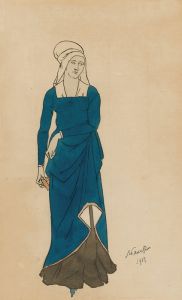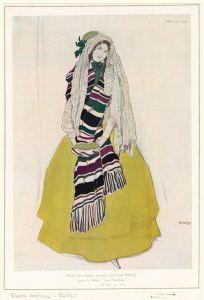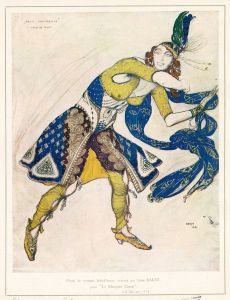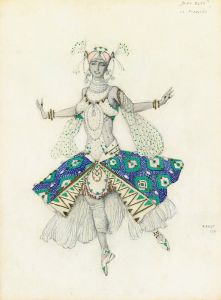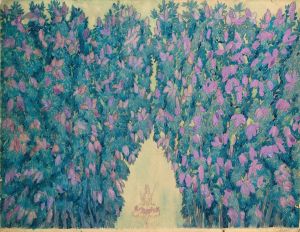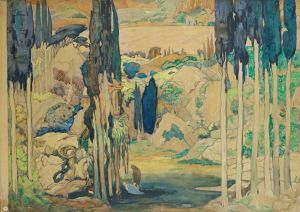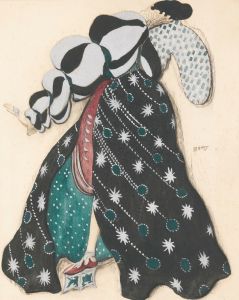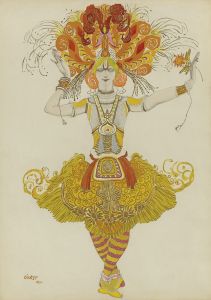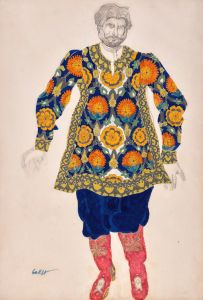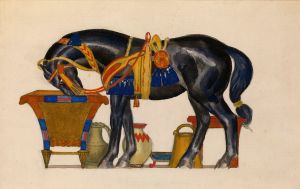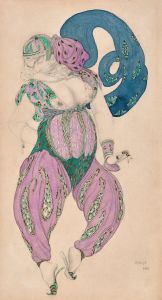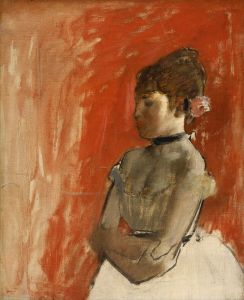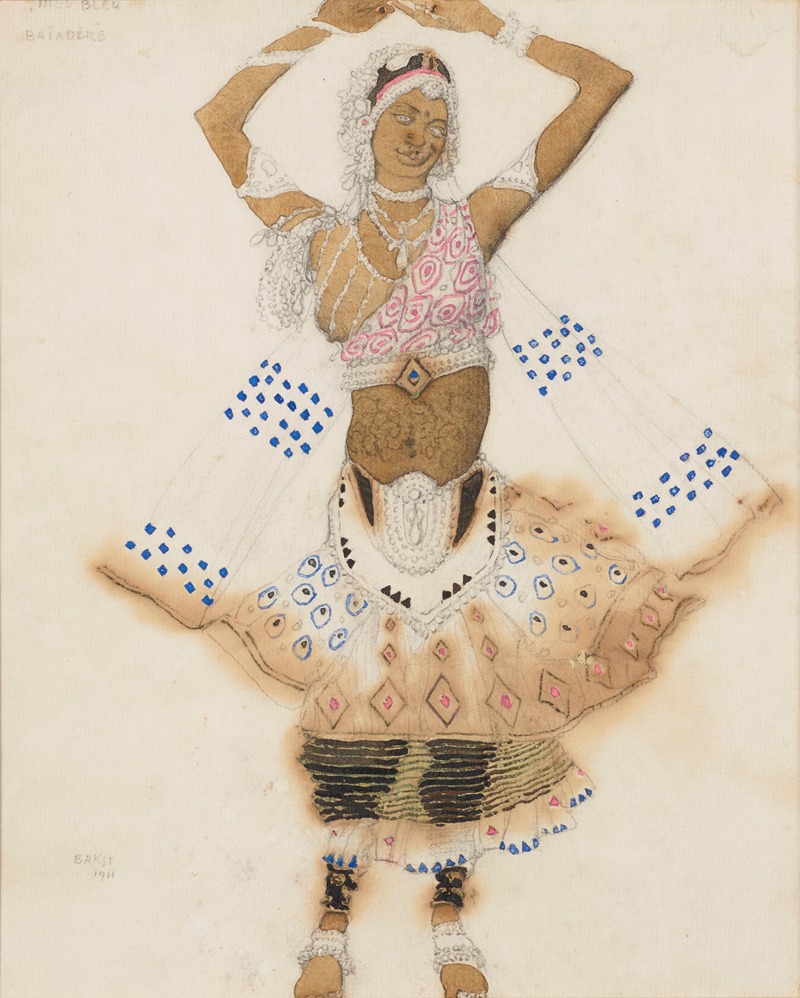
Costume design for ‘Le Dieu Bleu’; Bayadère
A hand-painted replica of Léon Bakst’s masterpiece Costume design for ‘Le Dieu Bleu’; Bayadère, meticulously crafted by professional artists to capture the true essence of the original. Each piece is created with museum-quality canvas and rare mineral pigments, carefully painted by experienced artists with delicate brushstrokes and rich, layered colors to perfectly recreate the texture of the original artwork. Unlike machine-printed reproductions, this hand-painted version brings the painting to life, infused with the artist’s emotions and skill in every stroke. Whether for personal collection or home decoration, it instantly elevates the artistic atmosphere of any space.
Léon Bakst, a prominent Russian painter and scene and costume designer, is renowned for his work with the Ballets Russes, a groundbreaking ballet company founded by Sergei Diaghilev. Among Bakst's celebrated contributions is his costume design for the ballet "Le Dieu Bleu" (The Blue God), which premiered in 1912. This ballet was a collaborative effort, with music composed by Reynaldo Hahn and choreography by Michel Fokine. The production was notable for its exotic themes and visual opulence, characteristic of the Ballets Russes' innovative approach to performance art.
Bakst's design for "Le Dieu Bleu" exemplifies his ability to blend vibrant colors, intricate patterns, and luxurious materials, creating a visual spectacle that complemented the ballet's mystical and exotic narrative. The costume for "Le Dieu Bleu" was particularly striking, featuring elaborate headdresses, richly decorated fabrics, and a palette dominated by blues and golds, which were intended to evoke the divine and otherworldly nature of the character. Bakst's designs were instrumental in conveying the narrative and emotional tone of the ballet, enhancing the audience's experience through visual storytelling.
The ballet "Le Dieu Bleu" itself was set in India and revolved around themes of spirituality and mythology, drawing inspiration from Eastern cultures, which were a source of fascination in early 20th-century Europe. Bakst's designs played a crucial role in bringing this exotic setting to life on stage, contributing to the overall aesthetic that the Ballets Russes was famous for. His work was characterized by a synthesis of traditional and avant-garde elements, which helped to redefine the visual language of ballet at the time.
Bakst's influence extended beyond the stage, impacting fashion and interior design in the early 20th century. His use of bold colors and patterns resonated with contemporary trends, and his work with the Ballets Russes helped to popularize Orientalism in Western art and design. The costumes for "Le Dieu Bleu" are a testament to Bakst's artistic vision and his ability to create immersive, fantastical worlds through his designs.
The legacy of Bakst's work with the Ballets Russes, including his designs for "Le Dieu Bleu," continues to be celebrated for its innovation and artistic excellence. His contributions to costume design have left a lasting impact on the world of theater and fashion, influencing generations of designers and artists. Bakst's ability to merge art with performance created a new standard for theatrical design, making him one of the most influential figures in the history of stage design.





